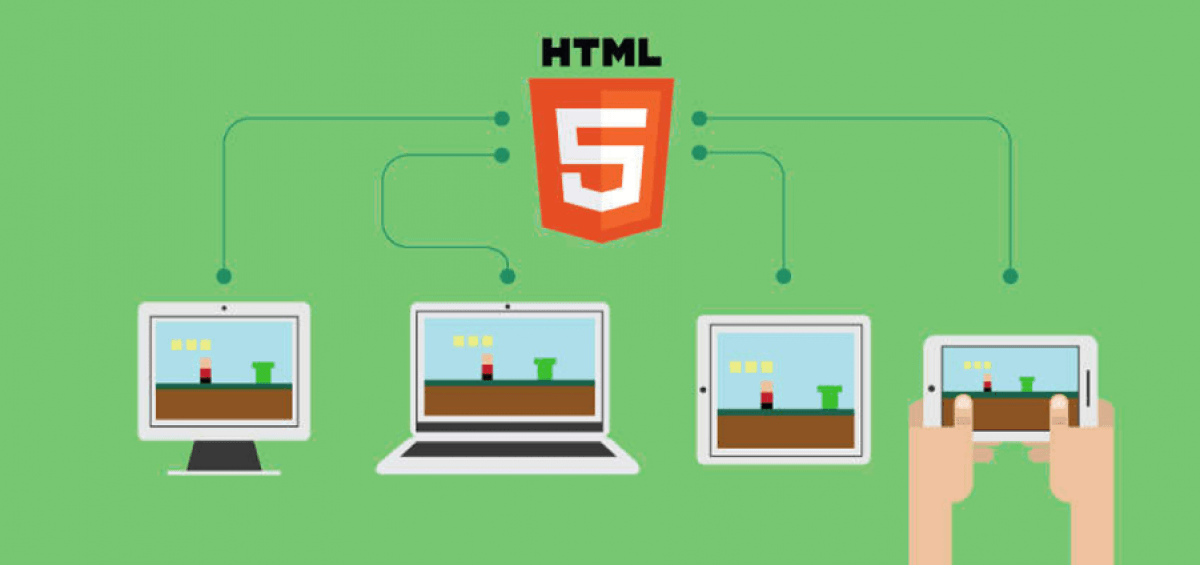Hydra Tech Insights
Stay updated with the latest in technology and gaming.
Navigating the Funhouse: HTML5 Development Adventures
Embark on exciting HTML5 adventures that turn coding into fun! Discover tips, tricks, and secrets for your development journey.
Exploring the Magic of HTML5: Essential Features for Modern Web Development
In the ever-evolving world of web development, HTML5 has emerged as a pivotal technology, bringing a wealth of features that enhance the user experience and streamline development processes. Unlike its predecessors, HTML5 introduces semantic elements that improve content structure. Elements such as <header>, <footer>, and <article> help developers create more meaningful and easily navigable web pages. Additionally, with the support for multimedia integration through <audio> and <video> tags, developers can embed rich media content without relying on third-party plugins, resulting in faster load times and improved accessibility.
Another highlight of HTML5 is its interactive capabilities, facilitated by the Canvas element and CSS3. The <canvas> tag allows developers to draw graphics and animations on-the-fly, paving the way for dynamic web applications. Coupled with the robust JavaScript APIs introduced in HTML5, such as the Geolocation and Web Storage APIs, developers can create highly functional applications that respond to user interactions in real-time. Whether it's a simple website or a complex web application, embracing the magic of HTML5 can significantly enhance performance and user engagement.

10 Common Challenges in HTML5 Development and How to Overcome Them
HTML5 development presents several challenges that can hinder the progress of web projects. One of the most common issues is browser compatibility, as not all browsers support every HTML5 feature uniformly. To overcome this challenge, developers should make use of polyfills and feature detection tools, like Modernizr, which help ensure that functionality degrades gracefully in older browsers. Furthermore, understanding the differences in rendering engines can significantly reduce discrepancies in how elements are displayed across platforms.
Another significant hurdle in HTML5 development is managing the complexities of new APIs, such as the Canvas API and Web Storage API. These features, while powerful, can be overwhelming for developers who are not familiar with their intricate details. A practical solution is to invest time in thorough documentation and hands-on coding practice. Breaking down the learning process into manageable chunks, focusing on one API at a time, can lead to mastery over time. Additionally, utilizing community resources and forums can provide support and insights during the learning curve.
How to Create Immersive Experiences with HTML5: Tips and Tricks
Creating immersive experiences with HTML5 involves leveraging the new features and capabilities that this powerful markup language brings to web design. Start by utilizing multimedia elements like <audio> and <video> tags, which allow you to embed rich media content directly on your pages without relying on external plugins. To further enhance the user experience, consider integrating Canvas for drawing graphics on the fly, or using SVG for scalable vector illustrations that maintain quality at any size. Additionally, the Geolocation API can be used to create interactive maps and location-based services that engage users in a unique way.
Another key aspect of crafting immersive experiences is the application of animations and transitions provided by CSS3. These can be easily combined with HTML5 elements to create dynamic content that captures user attention. For example, using the <div> element alongside CSS animations can bring life to your webpage, guiding users through different sections in an engaging manner. To ensure a seamless experience across devices, make your designs responsive by utilizing media queries, allowing your immersive experiences to be accessible on both desktop and mobile platforms. With these tips and tricks, you'll be well on your way to creating captivating digital experiences that resonate with your audience.